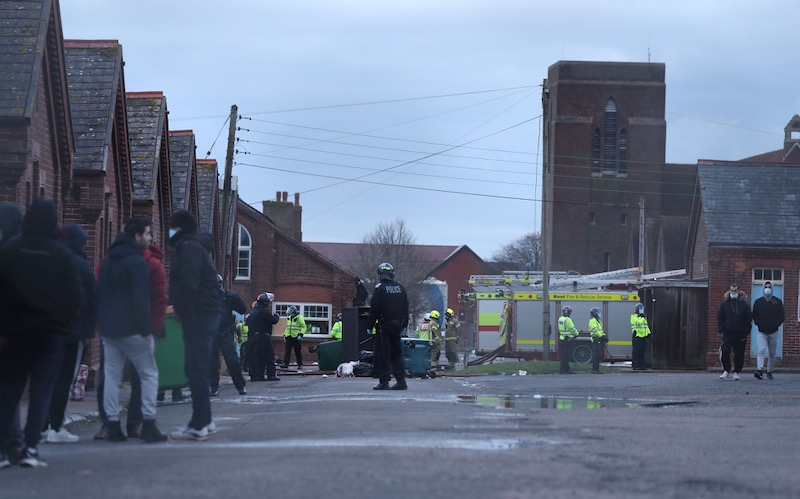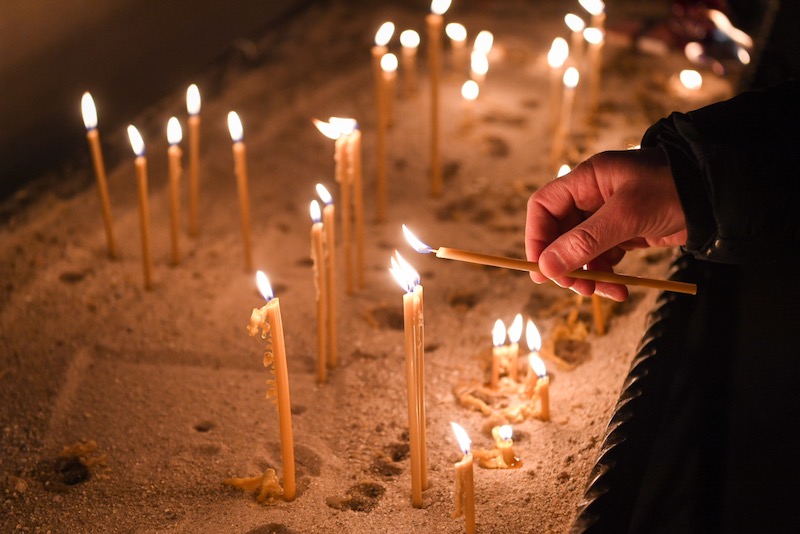It’s Candlemas today, 2 February. I know I’ve already explored its significance as the real date when Christmas decorations should be removed. But there’s so much more behind this feast day than the ritual discarding of desiccated berries and drooping greenery. Candlemas, as our ancestors recognised, was not only an important religious festival held in honour of Christ and His mother, but it also catered to our deep-seated spiritual, emotional and physical needs as the darkness of winter finally starts to retreat before the light of spring. Moreover, I’d also argue that some Candlemas traditions remain relevant and in need of revival to mark our experiences of Covid.
But first of all… the nerd stuff! You won’t find the name Candlemas in medieval liturgical calendars. That’s because it’s more properly known as the Feast of the Purification of the Blessed Virgin Mary, and is counted among the great feasts of the Virgin that punctuate the ecclesiastical year. It is a holy day with solid biblical foundations, the gospel of Luke describing how, 40 days after the Nativity, the Virgin went to the Temple to be ritually purified in accordance with Jewish tradition. She was accompanied by the baby Jesus, whom the aged Simeon recognised as the Messiah and the “Light of the Gentiles”.
Its formal religious celebration does back to the days of the nascent Church. The feast fell at the beginning of February, co-incidentally the month in which the ancient Romans did their spring cleaning.
But observance of the Purification took on a whole other significance in the frigid, darker climes of northern Europe, where picking up on the words of Simeon, it became a festival which emphasised light, especially the lighting of candles.
In England, where the feast has been celebrated since the time of the Venerable Bede in the late seventh century, it became known as Candlemas. The words of the Latin liturgy celebrated on the 2nd of February played upon the feast’s association with illumination: divine light in the darkness of human sin, the return and renewal of light at a dark time of year, the light of heaven made manifest to the world.
Elaborate, candle-lit processions were held in honour of the feast. The cloisters of Cistercian monasteries were ablaze with the clear light of bees wax candles, with every monk, lay brother, even guests and hired hands, participating in this great episode of religious drama. Ceremonies were held at even the most humble of parish churches. According to John Mirk, an Augustinian canon at Lilleshall Abbey, the day began with “great melody”. Each parishioner came to Mass bearing a candle to be blessed by the priest, which involved placing each candle before the high altar, being sprinkled with holy water and censed with perfumed incense.
The candles were esteemed by lay folk for their protective, even magical properties. Taken home, the candles would be placed in the hands of the dying, or lit during storms and tempests. The devil was believed to “tremble in their presence”.
Never passing on an excuse for a knees up, our medieval ancestors celebrated Candlemas with communal feasting, music and pageants, the latter taking their inspiration from the gospel of Luke.
But the blessings and merry making that accompanied Candlemas meant that it attracted the ire of Godly sixteenth-century Evangelicals. The sound biblical foundation of the feast meant that some Protestants were prepared to retain it in the calendar of the Reformed English Church. But rather than being celebrated in honour of the Virgin, it became a feast of Christ (the Presentation in the Temple). Purged of the “superstitious” blessing of candles ands its captivating ceremonies, it was quite frankly a bland, pale imitation of its former self.
One wonders how English Catholics in their secret chapels managed to mark the feast (please let me know if you’ve come across any evidence). Today’s Candlemas celebrations in the Church of England are very much a nineteenth-century innovation and have revived some of the glamour and sparkle of the medieval festivities.
But the feast’s association with light proved harder to extinguish among the populace. Until well into the eighteenth century, candles were exchanged as gifts on Candlemas and placed in the windows after nightfall.
I think we should revive this practice, tailoring it to our Covid-blighted times. I’m going to lead by example and light a candle in memory of the souls of those who’ve died of Covid, out of compassion and solidarity with those who grieve and in honour of those who’ve worked throughout the crisis, caring and keeping society functioning. And the candle will also be a beacon of hope, showing a tangible reminder that the light, in so many ways, is slowly returning.



 Loading ...
Loading ...
What do you think?
You can post as a subscriber user ...
User comments (0)